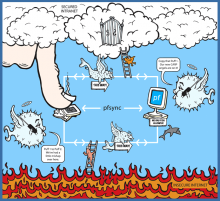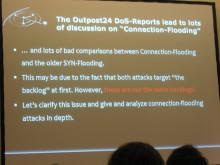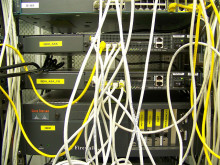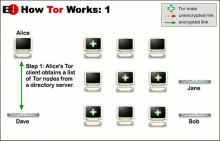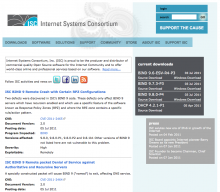Networking
IPv6-handling flaw found in Windows 7
Researchers have found a flaw in the way Windows 7 handles IPv6, one of the key protocols underlying the internet, saying attackers could use the vulnerability to crash PCs.
The security firm Barracuda Labs said on Tuesday that someone would have to make a targeted denial-of-service attack to exploit the vulnerability, but exploitation could cause failure in a PC's network connectivity, applications and sound system.
Filtering is the job of ISPs not NBN
Although it was technically possible for the National Broadband Network Company (NBN Co) to filter internet content over the heads of internet service providers (ISPs), the government has said that it will still force the responsibility onto ISPs.
On Monday, it was revealed that despite previous claims to the contrary, it would be technically possible for NBN Co, as a level two wholesale provider, to filter internet content at the Ethernet level of the Federal Government's $35.9 billion fibre to the home network using technology already available to ISPs.
Mobile networks near capacity, survey finds
Mobile networks in North America are filled to 80 percent of capacity, with 36 percent of base stations facing capacity constraints, according to a survey by investment bank Credit Suisse.
Fixing The Internet May Mean Building A New One
As hackers expose widespread cybersecurity lapses and heighten fears about defending critical infrastructure from attack, one proposed solution has started gaining traction: Rather than attempt to tighten security on the modern Internet, it suggests creating an entirely new one.
Earlier this month, former CIA Director Michael Hayden became the latest figure in Washington to call for a separate, secure Internet to shield vital systems like the power grid from cyber-attacks. The new commander of the military's cyberwar operations, Gen. Keith Alexander, has also endorsed the idea.
Mitigating Denial of Service Attacks
The common view of a denial of service (DoS) attack is that of a flood of requests to a given web server that overwhelms it and renders it useless, at least temporarily. Such attacks have most commonly been perpetrated via botnets, a network of hijacked computers compromised by malware coordinated by a command and control server (specifically, such attacks are referred to as DDoS – distributed DoS).
The United Kingdom's secret firewall
The UK has very strict laws about what you can and can't do with other people's data. If you intercept it so that you can see what it is, deliberately delay its transmission or prevent it from reaching its destination altogether, you can be fined or thrown in prison.
Unfortunately, that only applies if the data is written down and sent through the post. If it's electronic and you're an ISP, you can filter, delay and even block data all day long.
Tor Network Cloaks Your Browsing From Prying Eyes
You are not anonymous on the Internet. Even if you practice safe surfing by keeping your name, credit card number, and other private data off the Web, your Internet service provider may not be so scrupulous. Many telecom companies and search engines log user activities, and smart snoopers can mine these logs for your IP address and browsing history to figure out where you live, what you like and who you've been talking to.
Security vulnerabilities in ISC BIND 9
Internet Systems Consortium today released two new security advisories detailing a couple of newly found security issues within ISC BIND 9.
A defect in the affected versions of BIND could cause the "named" process to exit when queried, if the server has recursion enabled and was configured with an RPZ zone containing certain types of records. Specifically, these are any DNAME record and certain kinds of CNAME records.
DNS agility leads to botnet detection
Online criminals have evolved their tactics to harden their botnets against takedown using a variety of tactics, including fast-flux networks and Conficker-like dynamic domain generation. Yet, such tactics can also pinpoint when such networks are being created by bot operators, according to research from the Georgia Institute of Technology.
















































